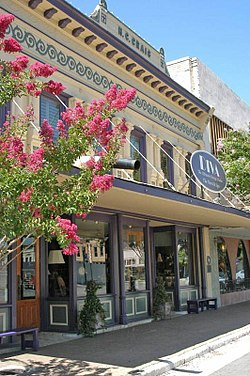Williamson County Courthouse Historic District | |
 The district surrounds the Williamson County Courthouse | |
 | |
| Location | Georgetown, Texas, United States |
|---|---|
| Coordinates | 30°38′12″N97°40′39″W / 30.63667°N 97.67750°W |
| Architectural style | Neoclassical, late Victorian |
| NRHP reference No. | 77001480 (original) 86000955 (increase) |
| Significant dates | |
| Added to NRHP | July 26, 1977 |
| Boundary increase | April 29, 1986 |
The Williamson County Courthouse Historic District is an historic district in Georgetown, Texas, listed on the National Register of Historic Places. [1] [2]






